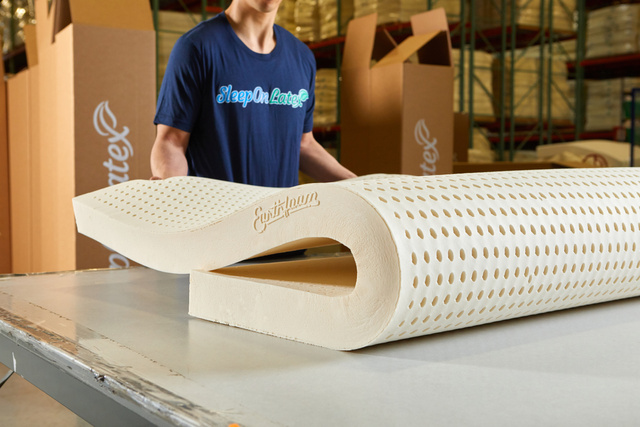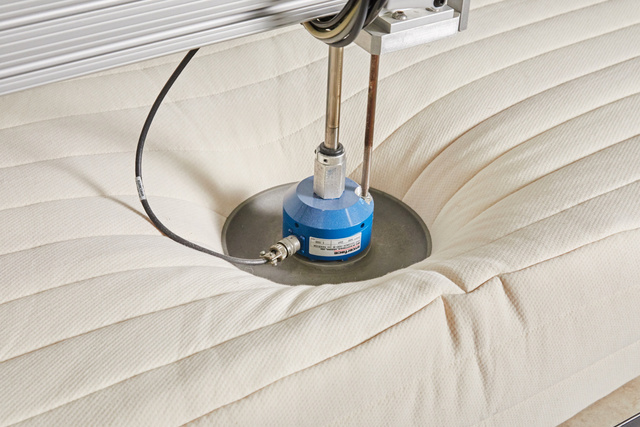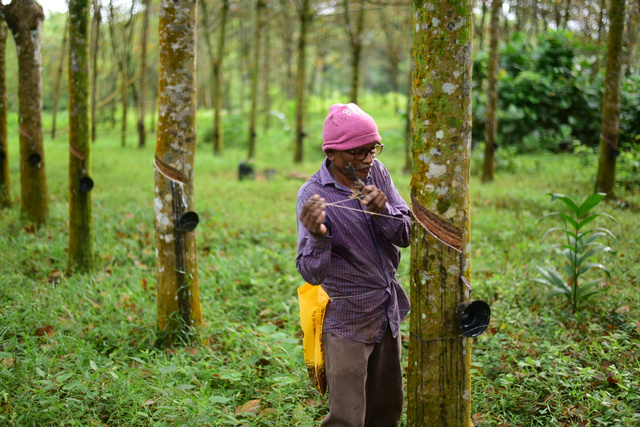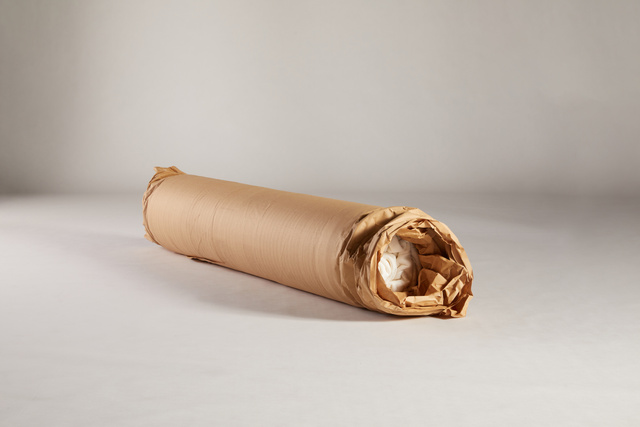Dunlop Vs. Talalay Latex Foam
The Dunlop process and the Talalay process are the two main processes used to create latex foam.

The Dunlop process and the Talalay process are the two main processes used to create latex foam. There is a lot of information (and misinformation) online about the differences between these two types of foam. This information can be a bit overwhelming and is often misleading.
Retailers selling Talalay foam tend to exaggerate the benefits of Talalay foam and the deficiencies of Dunlop foam, while retailers selling Dunlop foam tend to do the opposite. We have to admit that we are a bit biased when it comes to this subject. We carry only Dunlop latex foam mattresses and mattress toppers. We do so because we believe that Dunlop foam works better for more people (More on this later…). With that being said, we do want to emphasize that the differences between these two types of foam are often greatly exaggerated by retailers and manufacturers. As we will explain later, it is also very important to remember that many factors other than the manufacturing process can play large roles in determining the quality of the foam.
Both the Dunlop and Talalay process rely on vulcanization to produce latex foam. Vulcanization is a process through which liquid latex is hardened into a solid substance. Hardening is achieved by cross-linking latex particles with Sulfur. This reaction occurs through the application of heat and accelerators such as Zinc Oxide.
How the Dunlop Process Works
The Dunlop production process is the most energy efficient method of producing latex foam. While the latex is in liquid form it is foamed and poured into a mold. The mold is then closed up and placed on a conveyor belt. The mold is then moved on the conveyor belt into a vulcanization oven.
After vulcanization is complete, the latex foam can be removed from the mold and placed into a washing station. The foam is thoroughly washed to remove any soaps and excess materials from the foam. Thorough washing of the foam allows the foam retain its elasticity, counters aging and ensures it’s purity. After washing, the foam is dried at a high temperature to remove all moisture from the final product.
How the Talalay Process Works
The Talalay process is a more energy intensive process of producing latex foam. Many steps of the Talalay process are actually quite similar to the Dunlop process. As with Dunlop process foam, the latex is foamed and poured into a large mold. In the Talalay process, however, the mold is only partially filled. The lid of the mold is sealed and the latex is expanded by vacuum to fill the mold. Once fully expanded, the mold is frozen. At this point, carbon dioxide gas is pushed through the latex, which causes it to gel. The temperature is then raised to 220ºF to vulcanize the latex. As with the Dunlop process, Talalay process foam is thoroughly washed and eventually dried after it is vulcanized.
There Are Differences, But Not Big Differences
Before discussing the differences between these two different types of foam, it is important to note that the differences are not quite as dramatic as many retailers and manufacturers make them out to be. Because the differences are often used as selling points by retailers, it is easy to get the impression that there are huge differences between these two types of foam.
The truth is that the differences are relatively difficult to notice. The average person would not notice much of a difference at all between the two types of foam. Dunlop and Talalay foam look and feel very similar, especially when compared with other types of foam such as memory foam or polyurethane foam. The Main Differences Between Dunlop and Talalay Foam:
Dunlop foam is springy, Talalay foam is bouncy
Dunlop foam is denser than Talalay foam
The production process of Dunlop foam is more simple and energy efficient
Talalay Foam is Not Softer than Dunlop Foam!
There is a commonly repeated myth that Talalay foam is always softer than Dunlop foam. This is NOT TRUE. Both Talalay and Dunlop latex foam can be produced in a wide variety of firmnesses. The Dunlop process creates heavier, denser foam but this does not necessarily result in a foam that is firmer. Firmness and density are not the same thing and are measured in different ways.
Why We Sell Dunlop Foam
Our Pure Green Latex foam, which is used in all of our mattresses and mattress toppers, is made through the Dunlop process.
We believe that latex foam made through the Dunlop process works better for more people.
The main difference in feel between the two types of foam is the springiness. While all types of latex foam have a springy and elastic feel, Talalay foam has an extremely springy, “bouncy” feel. Some people prefer this, but many do not like this “bounciness”. We have found that Dunlop works well for just about everyone while Talalay is more polarizing and produces a wide range of opinions.
Process Isn’t Everything
It should be noted that not all Talalay foam feels the same and not all Dunlop foam feels the same. There are many variations that can be made of each type of foam. Both Dunlop and Talalay foam can be made with or without synthetic latex. Both types of foam can also be made with or without added fillers. Changes in the type of latex or filler percentages can have a big impacts on the performance of the latex foam.
Techniques for each process can also vary between different factories and equipment. Dunlop foam can also be made in a mold or on a continuous line. Continuous line Dunlop foam, is produced directly on a conveyer belt, rather than in a mold on a conveyer. Continuous line latex foam typically results in a lower quality foam than molded Dunlop latex foam. Our Pure Green latex foam is always made in a mold and never contains synthetic latex or added fillers.
Our goal is to provide the highest quality, all-natural latex products, that work well for all of our customers. After extensive research and testing, we chose to use the Dunlop process in designing our Pure Green Latex Foam. While we believe Dunlop works better for more people, we do not believe that Talalay is a bad product. It is very similar in most ways to Dunlop foam. While the production process should definitely be a consideration when choosing a latex foam mattress or mattress topper, we encourage our customers to look past exaggerations made from both sides of this debate.



